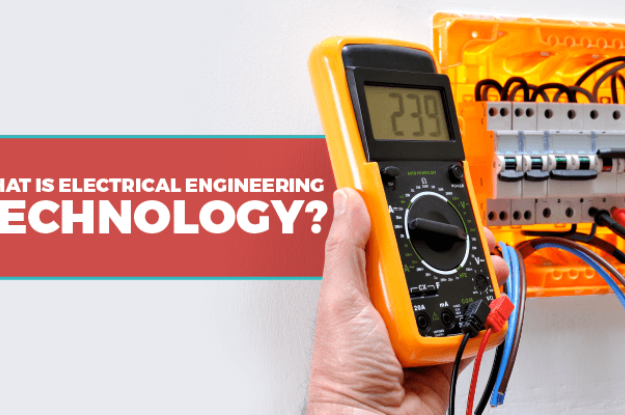Exploring the Revolutionary Advancements in Electrical Engineering Technology
Choosing The Right Path: Electrical Engineering Vs. Electrical Engineering Technology
Introduction
Welcome to the electrifying world of Electrical Engineering Technology (EET) – the dynamic backbone of modern ingenuity where the spark of innovation meets practical design. As we flip the switch on understanding the intricate dance between electrons and engineering, this article promises to illuminate the path ahead. With an eye on the pulse of technology, we'll explore the pivotal role of EET in the tapestry of today's technological marvels and why discerning the nuances between EET and traditional Electrical Engineering (EE) is not just smart—it's essential.
Diving into the core, our mission is to provide you with a comprehensive overview of EET, from its rich history to the exciting frontier of its applications. We're not just talking circuits and systems; we're talking lifeblood of innovation. Whether you're a budding technologist, a seasoned pro, or simply curious about where power meets progress, buckle up. You're about to discover why EET isn't just another cog in the machine of engineering technology, but a key that unlocks the future of our digital world.
History and Evolution of Electrical Engineering Technology
The journey of Electrical Engineering Technology (EET) is a tapestry of innovation, woven through the decades with threads of genius and the relentless pursuit of efficiency. Stemming from the roots of traditional electrical engineering, EET has grown into its own distinct branch, with a curriculum rich in applied design and hands-on prowess. Unlike its cousin, electrical engineering, which often focuses on conceptual design and theory, EET is the pragmatic sibling, its feet firmly planted in the practical application of electrical systems.
From the spark of the first light bulb to the intricate wiring systems of today's power distribution networks, EET's evolution reflects humanity's growing dependence on electricity. Early pioneers in the field, such as Edison and Tesla, set the stage for today's electrical and electronic engineering technologists, whose work now pulsates through every artery of modern technology—from smart grids to robotics.
As we have transitioned from the analog dials of yesterday to the digital controls of today, EET has also adapted, bridging the gap between traditional methods and groundbreaking technologies. This adaptability is what makes EET not just a study, but a living, breathing entity in the world of science and technology services. It's not just about the evolution of equipment, but the evolution of thought and practice that continue to energize fields as diverse as communications and manufacturing.
Applications of Electrical Engineering Technology
The wizardry of Electrical Engineering Technology (EET) is the quiet force behind the scenes of today's technological theater. From the lifeblood of electrical power systems that keep our cities glowing to the intricacies of telecommunications networks that keep us connected, EET is an omnipresent giant. It's like the stage crew of a Broadway show; without it, the performance doesn't go on.
In the realm of power systems, EET specialists ensure that the flow of electrical energy is steady and secure, from power generation equipment to the plugs in our homes.
When you pick up your phone to make a call, thank EET for the seamless operation of complex communications systems.
And in the world of automation, these professionals are the puppet masters of electronic controls and electrical control systems that make machines behave.
The impact of EET spreads far and wide, shaping not just the tools of today but sewing the seeds of tomorrow's innovations. It's a thrilling time to plug into this field and switch on a career that's charged with opportunity.
Fundamental Principles and Theories of EET
The bedrock of Electrical Engineering Technology (EET) is akin to the foundation of a skyscraper - it's all about the core principles and theories that keep the discipline standing tall and robust. At the heart of EET are the fundamental concepts of electronics, electrical power distribution, and computer science. These fundamentals are not just academic musings; they are the nuts and bolts of practical application.
Imagine a world where every flick of a switch or press of a button didn't result in instant electronic gratification. That's a world without the applied knowledge that EET professionals carry in their toolkit. EET is grounded in the understanding of how electronic components work and the magic behind power electronics that charge up our lives.
From the mysterious dance of electrons to the hum of a power grid, EET is the silent force behind many of today's technological ballets. The principles of instrumentation design and process control play a pivotal role in industries that range from the simple to the sublime.
It's the EET education that arms graduates with this critical knowledge, enabling them to bend the raw powers of nature into the conveniences and necessities of modern life. With every wire they twist and every circuit they design, EET graduates are not just connecting cables; they're stitching the very fabric of our technological tapestry.
Job Opportunities for EET Graduates
The horizons are bright for graduates waving the banner of Electrical Engineering Technology (EET). They're not just stepping onto the career ladder; they're ascending directly into a multitude of sectors ripe with opportunity. Think of EET as the golden ticket to a Willy Wonka factory of job opportunities, where instead of chocolate, there's a sweet array of career fields to explore.
Power Systems: EET alumni can jump into the energetic realm of electricity production and distribution, becoming the backstage wizards of our electrically-driven world.
Telecommunications: In these high-flying roles, EET graduates ensure the world remains connected, from fiber optics to satellite communications.
Automation: They're the puppeteers of machines, programming robots and automated systems that are the heartbeat of modern manufacturing.
These career paths aren't just about having the right tools in the toolbox; they're about being equipped with a Swiss Army knife of skills, from circuit analysis to systems management. The demand for such multifaceted Electrical and Electronics Engineering Technologists and Technicians is more than just a static buzz; it's a roaring demand in an ever-evolving technological landscape.
EET Education and Degree Programs
Diving into the ocean of knowledge that is Electrical Engineering Technology (EET), we find a treasure trove of educational pathways awaiting eager minds. From the foundational associate degree that plants the seeds of learning to the advanced degrees where expertise blossoms, EET offers a robust academic voyage.
Associate Degrees (AAS) – These programs are the springboards for aspiring technologists, focusing on the practical application of electrical engineering principles. They lay the essential groundwork for all degree requirements and cater to those aiming to jumpstart their careers swiftly.
Bachelor’s Degrees (BS or BSET) – For a deeper dive, these programs enrich students with a comprehensive curriculum blending theory and hands-on experience. Institutions like Purdue University and City Tech are lighthouses guiding students toward a bright future in the realm of EET.
Advanced Degrees – Graduate programs are the intellectual marathons for those who dream to lead and innovate. They fuse together all facets of EET, from research to administration, fostering the elite in the field.
Whether you're tinkering with consumer information systems or orchestrating the next-gen power grid, a degree in EET is your ticket to a rewarding career that electrifies the future of technology and innovation.
Comparison between EET and EE
At the crossroads of innovation, you'll find both Electrical Engineering Technology (EET) and traditional Electrical Engineering (EE) waving their banners. They may appear as twins at first glance, but dive a little deeper, and their unique personalities begin to shine. The EE experts are akin to master architects, dreaming up the grand designs of tomorrow's electrical equipment. Conversely, the heroes of EET, the electrical engineering technologists, roll up their sleeves and turn those dreams into tangible reality.
Skills: Where EET professionals boast robust mechanical skills and a knack for installation and troubleshooting, EE gurus frequently flex their theoretical muscles, dabbling more in complex computations and design.
Tasks: An electrical engineer might draft the blueprints for a new smart grid system, while an electrical engineering technologist gets down to the nitty-gritty, ensuring the equipment hums along smoothly.
Salary: As for the bottom line, salary often reflects the level of education and responsibility, with EE positions typically commanding a higher price tag – though with the right experience, EET professionals can also see their paychecks soar.
Whether you're drawn to the conceptual dance of EE or the hands-on rhythm of EET, each path offers a rich tapestry of career goals and opportunities. It's not just about the destination; it's about choosing the journey that electrifies your passion.
Conclusion
As our journey through the electrifying world of Electrical Engineering Technology (EET) comes to a close, it's clear that EET is a live wire in the landscape of modern technology. From the power systems that energize our cities to the telecommunications infrastructure that keeps us connected, EET's current flows strongly through the veins of innovation. The road ahead for EET graduates is illuminated with a spectrum of career opportunities, where academia and industry experts forecast a high demand for these skilled professionals.
Making the choice between Electrical Engineering (EE) and EET isn't just a matter of comparing circuit diagrams—it's about aligning your passion with your career. Whether you're hands-on with equipment or strategizing over project timelines, each path offers unique rewards. By understanding the fundamental differences and complementary nature of these fields, you're empowered to switch on the future that resonates with your ambitions. Now, charged with knowledge and insights, it's time to engineer your own success in the ever-evolving, high-voltage domain of EET.







